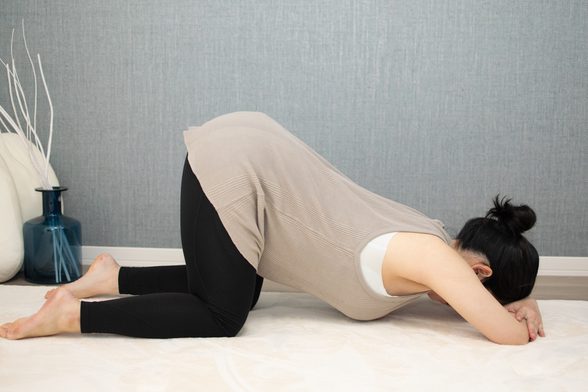
Babies twist and turn throughout pregnancy, but most move into the delivery position (head first) a few weeks before birth. When this doesn’t happen, and the baby’s feet and/or butt are positioned in such a way that they get delivered first, this is known as a breech presentation.
There are three types of breech baby positions, depending on the position of the baby in your uterus:
Complete: The baby’s bottom points down, and their legs are folded at the knees, with the feet tucked in.
Footling: The baby’s bottom is aimed towards the birth canal, and its legs are straight up in front of its body, with its feet near the face or head.
Frank: One or both of the baby’s feet point down so that they are the first part of the body to come out during delivery.
Most breech babies turn to a head-first position by 36 weeks, but there is a small chance that they will not move into that position before 37 weeks. Breech babies account for about 3% to 4% of all full-term pregnancies.
What Causes Breech Positioning?
What causes a breech presentation isn’t fully understood, but the American Pregnancy Association states that a breech birth has a tendency to occur more frequently in the following situations:
- if the pregnant woman has a history of several pregnancies
- if a woman is pregnant with multiples
- if a woman has a history of delivering prematurely
- if a woman has placenta previa
- if the uterus contains either too little or too much amniotic fluid
- if the woman’s uterus has an abnormal shape or other problems such as fibroids
Diagnosis of Breech Positioning
An obstetrician will diagnose a breech presentation a few weeks before a baby’s due date by placing their hands on the mother’s lower abdomen and locating the baby’s head, butt, and back. If they feel that the baby may be lying in a breech presentation, they may use an ultrasound to confirm it.
If the plan was for a vaginal delivery, a breech baby could change these plans. When a baby is breech, a vaginal delivery can be complicated and dangerous. Healthcare providers may feel comfortable attempting a vaginal breech delivery, but in most cases, they will recommend a C-section.
Is It Possible to Turn a Breech Baby?
There are various methods, some natural and some medically-assisted, to turn a baby that is in a breech position. The success rate of each method varies.
Here are some “try-at-home” methods that women attempt to flip their baby to a head-first position:
- Bridge position: Lie on the floor with your legs bent and your feet flat on the ground. Raise your hips and pelvis into a bridge position. Hold this position for 10 or 15 minutes several times a day.
- The breech tilt: While lying on your back, use large, firm pillows to raise your hips about a foot off the floor. Do this three times every day for 10–15 minutes. You can do this technique when the baby is active and on an empty stomach. While doing this technique, concentrate on your baby, particularly in your abdominal area, and avoid tensing the body.
- Child’s pose: Rest in child’s pose for 10 to 15 minutes. It can help relax your pelvic muscles and uterus. To promote activity, you can also rock back and forth on your hands and knees or make circles with your pelvis.
- Swim: Swimming and doing crouches and flips in the pool can help a baby turn into the vertex (head down) position.
- Temperature Ranges: Try placing something cold at the top of your stomach where your baby’s head is. Then, place something warm at the bottom of your stomach.
Another great resource our doctors love is the daily Spinning Babies exercises, which help relieve tension in the soft tissues of the mother’s pelvis. This can create more optimal space for the baby to move to a head-down position.
How Chiropractic Care Can Help Possibly Move Babies Out of Breech Presentation
Chiropractic adjustments can often provide the optimal space for the baby to turn by aligning the pelvis and relaxing tight uterine ligaments attached to the fascia near the pelvis. A chiropractic technique called the Webster technique can help a pregnant mom’s uterus relax by adjusting the sacrum and relaxing the round ligaments and psoas muscle, which balance the pelvis and may promote the desired movement of the baby.
Both Dr. Lydia and Dr. Rachael are Webster-certified to treat these pregnancy conditions. They recommend regular care during pregnancy to reduce the chance of the baby being in a suboptimal position in those final weeks. Typical care recommendations are 1x/month until 32-34 weeks, and then weekly until delivery.
Acupuncture is also a great method for moving a breech baby around using specific acupressure points. Vaida Wellness has an acupuncturist on staff, Maria Rafdal, who specializes in prenatal care.
Give us a call or schedule an appointment via our online scheduler. Dr. Lydia, Dr. Rachael, and Maria would love to support any of our pregnant mamas!
